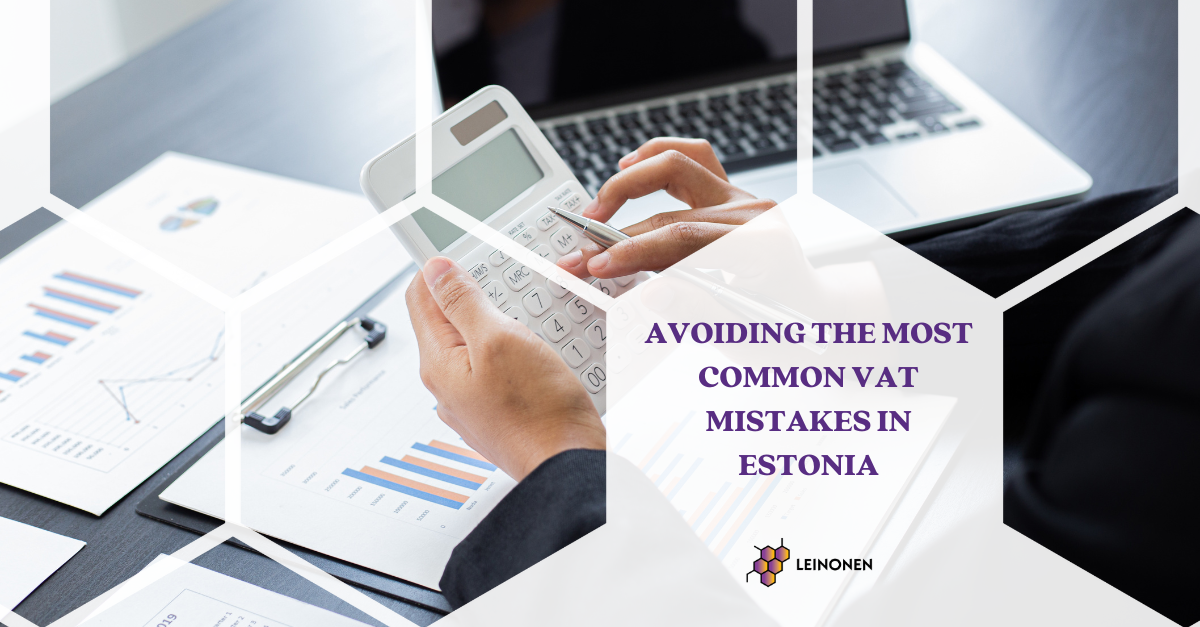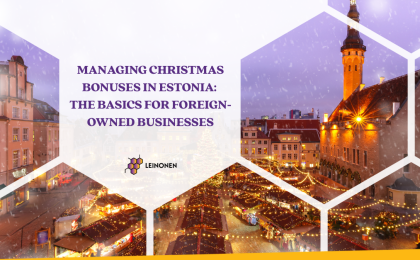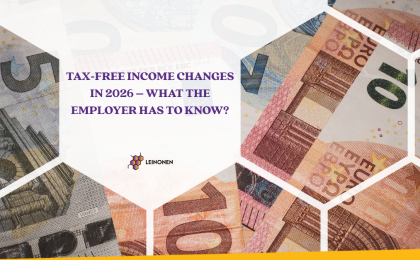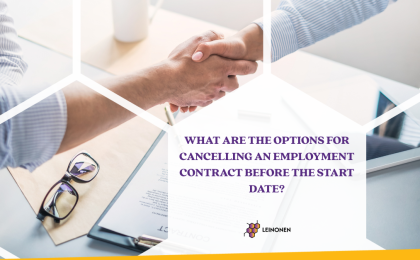Value added tax (VAT) is a consumption tax applied to goods and services used in European Union (EU) countries. Most goods and services are subject to VAT, with the main exception being those sold to overseas customers.
General guidelines are imposed by the VAT Directive, but countries are free to set their own VAT rates. While businesses are responsible for registering for and handling VAT, the cost is ultimately added to the price of goods and services and paid by the final customer.
VAT in Estonia: The Basics
Who is Liable to VAT in Estonia?
Once the taxable turnover of a business exceeds €40,000, it is mandatory to become VAT registered with the Tax and Customs Board in Estonia.
What is VAT Charged on in Estonia?
VAT in Estonia is Generally Charged on:
- Supply of goods within Estonia.*
- Import of goods into Estonia.*
- Provision of services from another country.*
- Supply of goods exempt from tax, where VAT has voluntarily been added.
- Intra-community acquisition of goods.
* Except when goods/services are exempt from tax.
What are Estonia’s VAT Rates?
As explained in the VAT Act, VAT rates in Estonia can be 22%, 9%, or 0%. As of January 2024, the standard VAT rate is 22%. This is applicable to everything not covered by a reduced rate.
The Reduced Rate of 9% Applies to:
- Physical and electronic books and educational literature transferred by an education service provider to the recipient of their services.
- Certain pharmaceutical products (e.g. medicinal products, contraceptives and sanitary products).
- Medical devices to be used by disabled persons.
- Physical and electronic press publications.
- Accommodation services (e.g. hotels).
The Reduced Rate of 0% Applies to:
- Intra-community transport.
- International transport.
Further details on specific examples and exclusion/inclusion criteria for the above categories can be found in the VAT Act.
Common VAT Mistakes in Estonia
Even the savviest business owner is only human, and with complex rules and regulations to contend with, mistakes are all too common. For foreign businesses setting up a base in Estonia, it may be even more difficult to understand Estonian VAT laws. Here are some of the most common mistakes our Estonian accountants see.
Frequently Made VAT Calculation Mistakes in Estonia
- Including non-deductible VAT amounts as deductible (e.g. VAT for costs of fringe benefits).
- Applying the wrong rate of VAT (e.g. applying 0% when the standard rate of 22% is applicable).
- Deducting 100% of VAT amounts while performing non-taxable VAT activities. In this case, prorate should be calculated. See case study below for a real-world example.
- Applying local VAT reverse charge for immovable property when not applicable (e.g. when one of the suppliers is not a VAT payer in Estonia, or for a dwelling).
- Applying local standard VAT in Estonia when a different VAT rate from a foreign country is applicable (e.g. for real estate located in a foreign country).
- Misinterpretation of VAT-exemption. A common misconception is that VAT-exempt goods and services are taxed with the 0% VAT rate, meaning purchase VAT could be considered deductible. However, when a company supplies VAT-exempt products and services, purchase VAT is non-deductible.
Frequently Made VAT Documentation Mistakes in Estonia
- Not submitting an EU sales list for goods and services supplied to EU VAT payers.
- Reporting VAT taxable transactions as tax-exempt.
- Not submitting supporting documents when applying 0% VAT rate.
- Not submitting supporting documents for supplies outside of Estonian territory.
- Issued invoices not meeting the correct requirements.
Sector Specific VAT Issues in Estonia
Real Estate
Many companies involved in real estate sales transactions make mistakes in their invoices and declarations, as taxation in this area is very nuanced. For example, short-term accommodation services are taxable, whereas dwellings are tax-exempt. Businesses venturing into real estate in Estonia can benefit from the support of an accountancy firm with local expertise.
Estonian VAT Laws and Compliance Errors
Estonian VAT Law Changes
Taxpayers who do not stay informed on changes to VAT laws are at risk of running into compliance errors and fines. For example, the standard rate of VAT in Estonia changing from 20% to 22% caused confusion and subsequent errors for many businesses issuing invoices and VAT returns at the start of 2024.
Consequences of Incorrect or Late VAT Filing in Estonia
The Estonian Tax Authority charges a penalty of 0.06% per day for late VAT payments. Incorrect filings may leave businesses subject to fines of up to €3,300 in total (starting at a maximum of €1,300 in the first instance).
Fines are Typically Issued When:
- A return is not in compliance with requirements.
- The tax authority has informed the person of the deficits and where necessary set a term to allow them to correct these.
- The person has not submitted a corrected return in the period set out by the tax authority.
The Impact of VAT Errors: Case Study Example
In one case study, a taxpayer had deducted 100% of purchase VAT amounts, despite performing non-taxable VAT activities like financial services. In these cases, prorate should be calculated for VAT to be deducted proportionally. This meant that the company had paid less VAT than was required. Errors like this can lead to the Estonian Tax Authority imposing late payment interest or a significant fine affecting the company’s cashflow.
How can Leinonen Help With VAT issues in Estonia?
Navigating new and ever-changing financial regulations can be a significant challenge for foreign businesses in Estonia. With 34 years of experience in taxes, accounting, payroll and financial services in the country, Leinonen’s local expertise are second to none.
While general Webline training is provided by the tax authority, Leinonen Estonia supports companies on a more personalised level. For example, we are experienced in helping businesses prepare and deliver effective VAT training for staff members. With our support, companies can confidently establish efficient and reliable tax and payroll processes that comply with Estonian law.
To discover how Leinonen can help your team save time, money, and hassle with streamlined financial management, contact us today.





